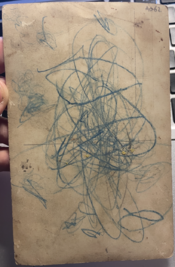AugustoJandolo
Member
Dear forum members,
I’m sharing two vintage photographs I’ve collected, both clearly misprinted. These small curiosities amuse me, and I’d love to hear any thoughts you might have.
The first, dating to around the 1910s, depicts a grandmother (I presume) with her two grandchildren. It was printed in negative but wasn’t discarded—at most, it was kept within the family, and some scribbles were drawn on the back by children.
The second, dated between the 1940s and 1950s, shows an Italian family at the dinner table. There’s wine in a fiasco and in the typical Roman one-liter glass carafe, and the grandmother is wearing a veil. But how could the Kodak Enlarging Exposure Scale have ended up appearing in the print?
Just a curiosity...
I’m sharing two vintage photographs I’ve collected, both clearly misprinted. These small curiosities amuse me, and I’d love to hear any thoughts you might have.
The first, dating to around the 1910s, depicts a grandmother (I presume) with her two grandchildren. It was printed in negative but wasn’t discarded—at most, it was kept within the family, and some scribbles were drawn on the back by children.
The second, dated between the 1940s and 1950s, shows an Italian family at the dinner table. There’s wine in a fiasco and in the typical Roman one-liter glass carafe, and the grandmother is wearing a veil. But how could the Kodak Enlarging Exposure Scale have ended up appearing in the print?
Just a curiosity...









